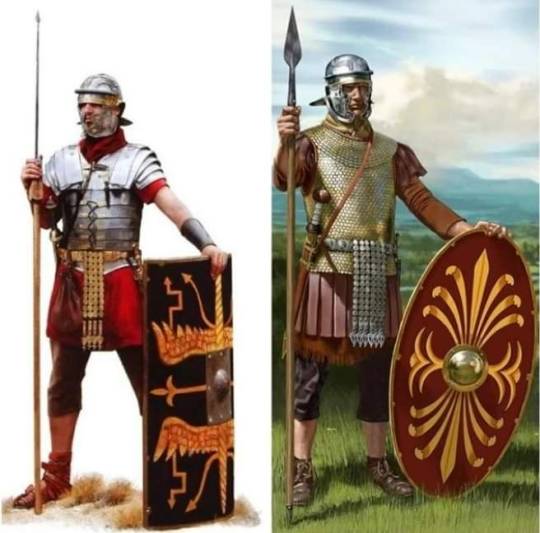#roman legion
Text
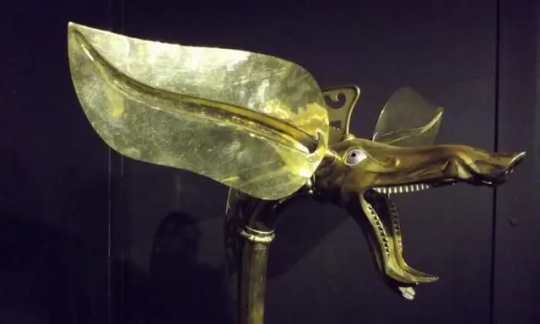

The 'Carnyx' Nightmare of the Roman Soldiers
The Carnyx was a brass musical instrument used as a psychological weapon of war by the ancient Celts between 300 BC and 200AD in western and central Europe and beyond.
The carnyx was once widespread throughout much of Europe, although only a dozen or so fragments are known to us.
It was carried by bands of Celtic mercenaries; it was present at the attack on the Greek sanctuary at Delphi in 279 BC; it defied Julius Caesar in Gaul; and it faced Claudius when he invaded Britain. They are even shown on a Buddhist sculpture in India, proof of the far-flung connections of the Iron Age world.
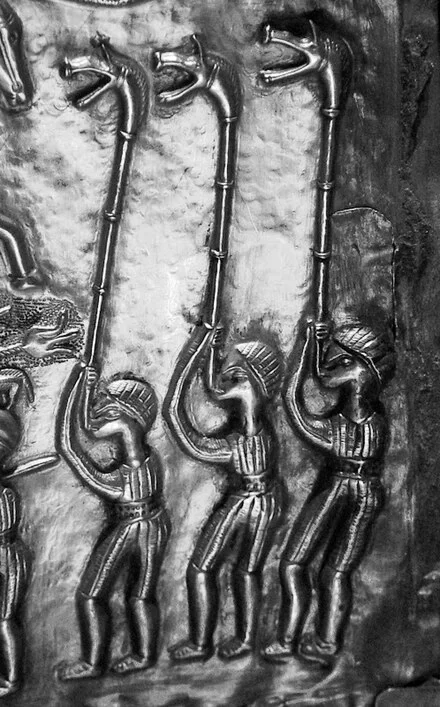
However, they were not only used by the Celts; they were also used by the Dacians in modern Romania. The term “Celtic” is a complicated one. The concept of a pan-European Celtic culture is a myth; rather, aspects of art and technology were shared across vast distances by diverse cultures. The carnyx was one example of this.
A 12-foot-long, thin bronze tube with right-angle bends on both ends made up the carnyx. The lower end ended in a mouthpiece, and the upper end flared out into a bell that was usually decorated to look like a wild boar’s had. Historians believe it had a tongue that flapped up and down, increasing the noise made by the instrument. The carnyx was played upright so that the boar’s head bell protruded well above the warriors’ heads. Its primary goal was to create more noise and confusion on the battlefield.
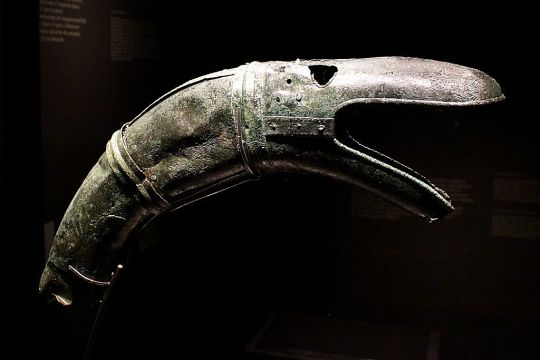
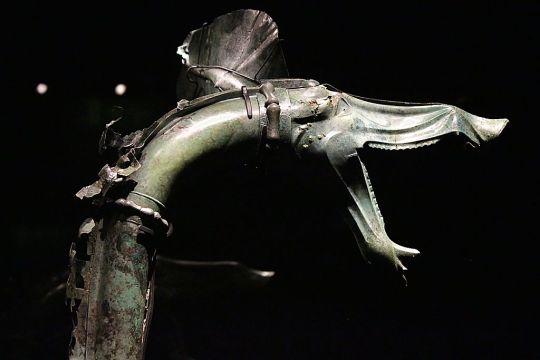

The Greek historian Polybius (206-126BC) was so impressed by the clamor of the Gallic army and the sound of the carnyx, he observed that “there were countless trumpeters and horn blowers and since the whole army was shouting its war cries at the same time there was such a confused sound that the noise seemed to come not only from the trumpeters and the soldiers but also from the countryside which was joining in the echo”.
And the Roman historian Diodorus Siculus wrote, “Their trumpets are also of a peculiar and barbaric kind which produce a harsh, reverberating sound suitable to the confusion of battle.”
Archaeologists discovered a hoard of ritually destroyed weapons in 2004, including a dozen swords, scabbards, spearheads, a shield, bronze helmets, an iron helmet shaped like a swan, a cauldron, animal remains, and seven carnyces. Before the Tintignac discovery, the remains of only five actual carnyces had been found.
The finest was unearthed in Deskford, Scotland in 1816. The Deskford carnyx only has the boar’s head bell and is missing the mane, tongue, and tubing. Images of Carnyx players have been found as well. A Roman denarius, dating from 48 BC bears a representation of a Carnyx. Three carnyx players are featured prominently on the Gundestrup Cauldron, which was found in a Danish peat bog.
One of the seven found at Tintignac, on the other hand, was almost entirely complete. The Tintignac Carnyx was broken into 40 pieces. When puzzled back together, it was found to be just an inch short of six feet long with a single missing section of the tube. The bell was a boar’s head with protruding tusks and large pointed ears. Once restored, the Tintignac Carnyx proved to be the first virtually complete carnyx ever found.
By Leman Altuntaş.
Music video by John Kenny.
#The Carnyx#The 'Carnyx' Nightmare of the Roman Soldiers#Iron Age war trumpet#ancient artifacts#archeology#archeolgst#history#history news#ancient culture#ancient civilizations#celtic mythology#celtic history#roman history#roman empire#roman legion
2K notes
·
View notes
Text


Zelda Roman Empire AU by rivaeri
#rivarie#legend of zelda#roman legion#roman empire#lorica segmentata#plate armor#gladius#shield#tower shield#noble#archer#robe#laurel wreath#cloak#link#zelda
555 notes
·
View notes
Text
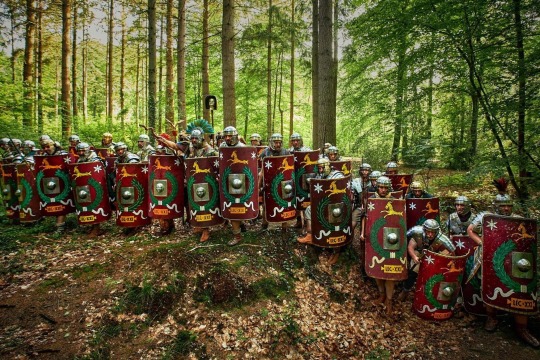
Legion XXI “Rapax.”
119 notes
·
View notes
Text

Roman Legionary Helmet from Brigetio, Hungary, 1st Century CE, The National Roman Legion Museum, Caerleon, Wales
#roman#roman army#roman empire#roman living#roman helmet#roman metalwork#roman soldiers#roman wales#roman armour#archaeology#relic#artefact#wales#Caerleon#roman legion
231 notes
·
View notes
Text
12-year-old Rowan’s routine walk turned into an extraordinary discovery in the heart of England when he stumbled upon a rare Roman Armilla bracelet, dating back nearly 2,000 years. Experts say the gold relic speaks volumes of ancient valor and honor.
34 notes
·
View notes
Text

Roma invicta for sure 😳
#art#inspired by one outfit from Barbarians on netflix#Roman army#centurion#ancient rome#history#roman legion#roman legionary
282 notes
·
View notes
Text
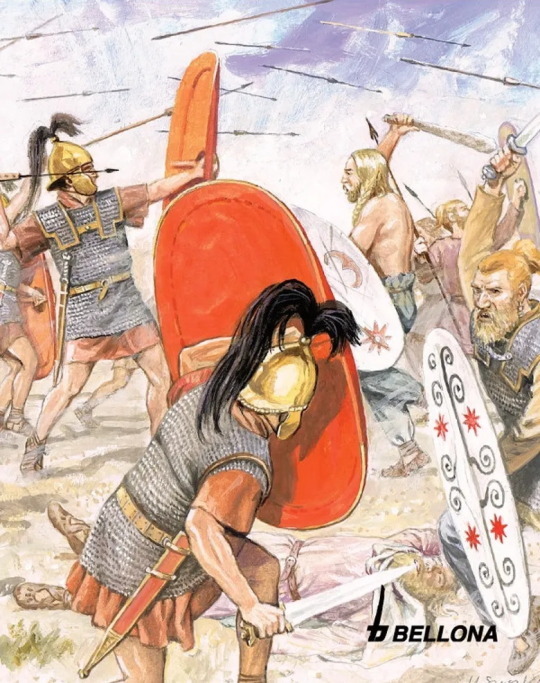
Marek Szyszko
7 notes
·
View notes
Text
Ray Stevenson - You left us too early!

Titus Pullo is one of my all time favorite characters ever.
He was very briefly based on an actual person: a man with the same name was serving in Ceasar's legion and had a fight with guy called Lucius Vorenus. Just like in the series.
He had lots of interesting characters and I did enjoy many of them: Porthos in three Musketeers, Dagonet and Gar Saxon.
#rome-series#star wars rebels#rome#star wars the clone wars#ahsoka series#actors#rip#such a pity#titus pullo#gar saxon#porthos#roman legion#lucius vorenus
21 notes
·
View notes
Photo
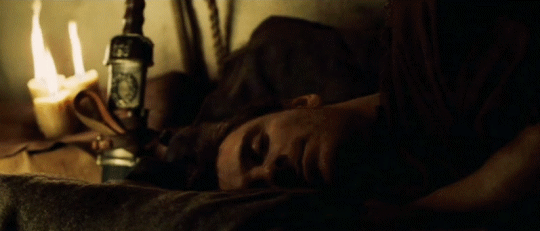


Michael Fassbender as Quintus Dias and Dominic West as Titus Virilus in Centurion
Made by purpledragongifs. All gifs are 540px wide. Please do not delete credits.
15 notes
·
View notes
Text

Poor little guys have been missing for over nearly 2,000 years, their momas must be so sad!
😢
#history#falinks#ancient rome#legio ix hispana#legion#ancient history#pokemon#game freak#roman republic#roman empire#roman history#pokemon sword and shield#pokemon origins#military history#britannia#roman legion#galar region#roman britain#ancient#military#history mystery#ancient romans#nickys facts
8 notes
·
View notes
Text
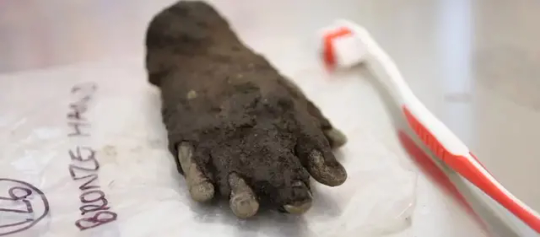
A Rare Bronze Hand Discovered in Vindolanda
One of Europe’s most important Roman archeological sites is the Fort of Vindolanda, one of the earliest Roman garrisons built by the Roman army in England. It was a Roman auxiliary near Hadrian’s Wall that guarded a major highway called the Stanegate.
Only a few weeks had passed since the start of the excavation season at Vindolanda when a remarkable artifact was discovered 1.5 meters below present-day ground level in the uppermost layers of the northern Severan ditch fill.
A small, child-sized, and eerily life-like bronze hand had been discarded in the ditch. Close inspection of the artifact after conservation at Vindolanda revealed that the 10cm hand originally had an attachment, now missing, inserted into the palm.
The hand is very well crafted, especially on the palm-facing side, indicating that its purpose was to profile the object that it once held. The base of the hand is socketed and would have been originally fixed to a pole.
The hand was uncovered some metres beyond a temple dedicated to Jupiter Dolichenus, tucked into the northern wall of the third-century fort at Vindolanda which was excavated in 2009.
The newly discovered hand most likely served a cult function and was possibly associated with Jupiter Dolichenus, a god and mystery cult that was popular in the Roman Empire from the early second to mid-third centuries AD.
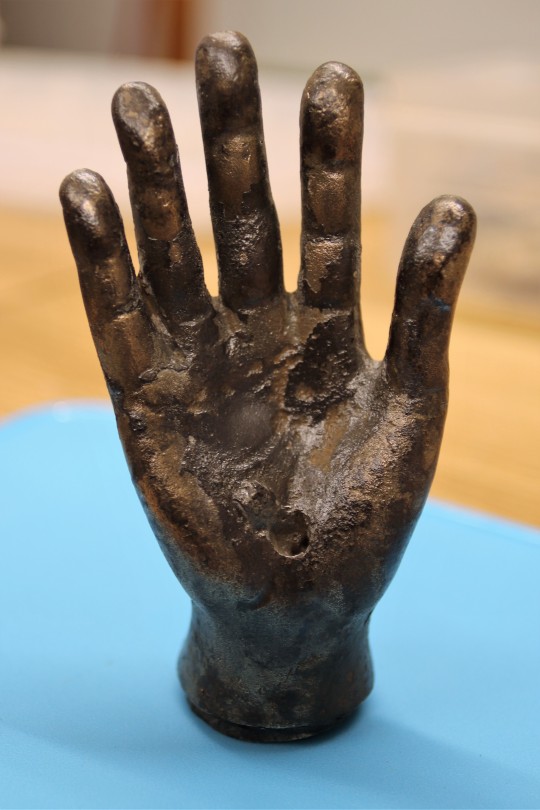
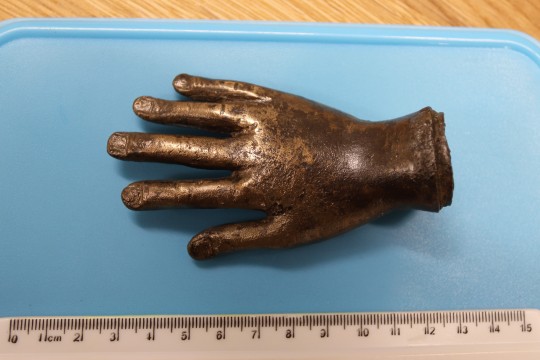
Similar votive hand specimens have been discovered in or near other Jupiter Dolichenus temples, though most are slightly larger than the Vindolanda specimen and some are fortunate enough to still have inscriptions mentioning the god.
Jupiter Dolichenus is depicted holding a thunderbolt in his hand with an upraised arm signifying his destructive power, the open votive hand symbolizes the protection and well-being that he could also bring.
The hand is now on public display in the same gallery as the altars dedicated to Jupiter Dolichenus at the Vindolanda Museum.
Between AD 85 and 370, nine timber or stone forts were built at Vindolanda, resulting in one of the most complex archaeological sites in Britain and a unique cultural legacy of frontier life.
Today, Vindolanda is an ongoing active archaeological site, with previous excavations uncovering thousands of perfectly preserved shoes, textiles, wooden objects, and the Vindolanda tablets (the oldest surviving documents in Britain that date from the 1st and 2nd century AD).
By Oğuz Büyükyıldırım.
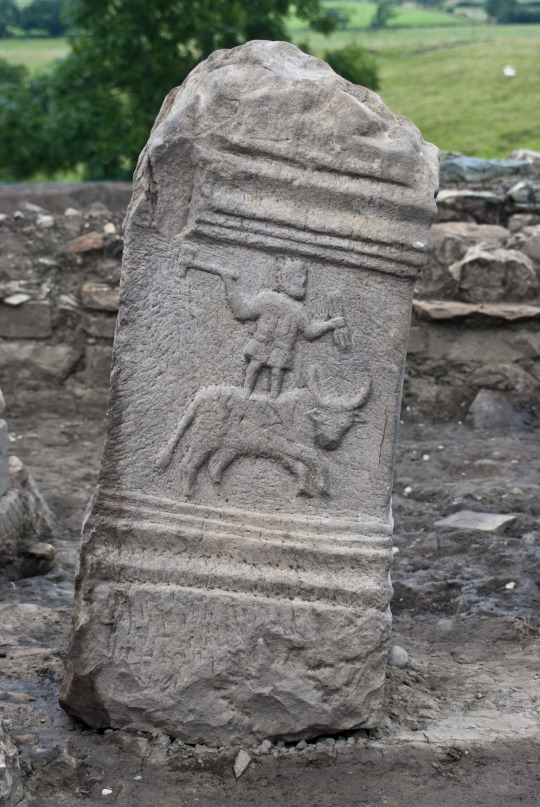

#A Rare Bronze Hand Discovered in Vindolanda#Hadrian’s Wall#bronze#bronze sculpture#ancient artifact#archeology#archeolgst#history#history news#ancient history#ancient culture#ancient civilizations#roman history#roman empire#roman art#roman legion
164 notes
·
View notes
Photo
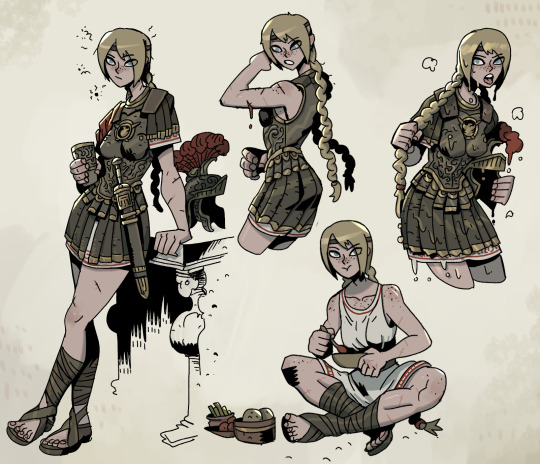
Roman woman by hou_jae04
994 notes
·
View notes
Text
This Vitruvian HACK now lives rent free in my brain:

I mean... Gorgeous detailing, beautiful sculpting... only for him to be posed like the chillest, mellowest dude in the roman army. Not some amazing pose that shows off the details or to make this thirty dollar toy look super cool. Just... This. And it actually feels real and historical. Dude just resting against his super heavy shield, instead of holding it at all times.
"S'up? How's it goin'?"
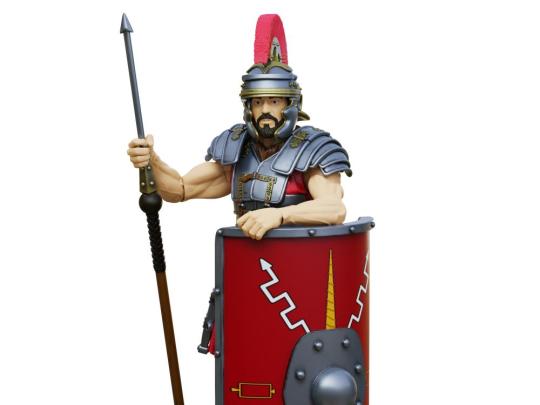
"So, what bring ya all the way out here?"
14 notes
·
View notes
Text
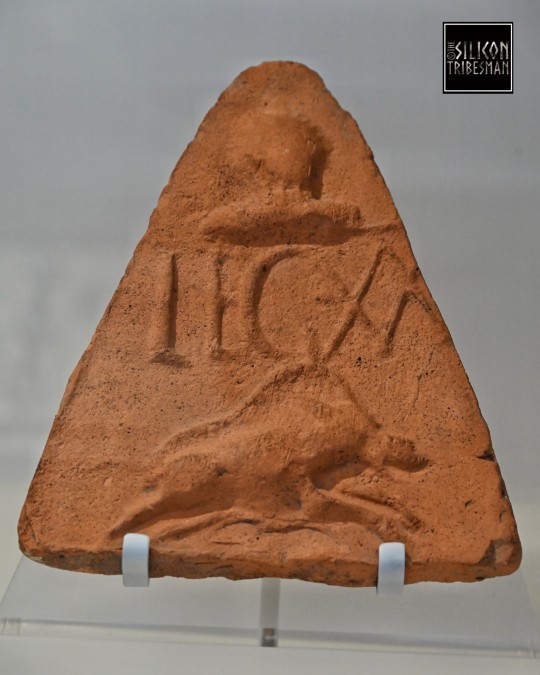
Roman Military Inscription Tile, St Fagans National Museum of History, nr. Cardiff, Wales
#romans#roman empire#roman#roman army#roman soldiers#roman legion#roman symbol#roman pottery#tile#archaeology#relics#ancient cultures#Wales#Cardiff#roman emperors#roman design#roman craft
44 notes
·
View notes
Text
Life in the Roman Army wasn’t all about killing. Games played an important role in the life of a Roman soldier, used for everything from blowing off steam to improving their skills.
26 notes
·
View notes
